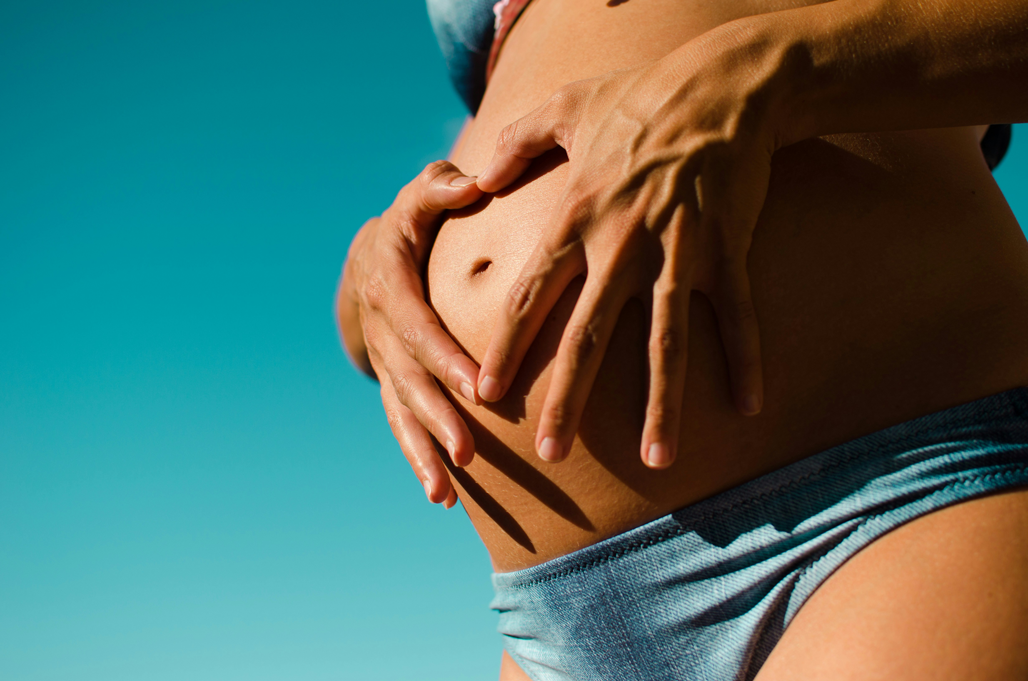Shannon*, a mother of two who is now in her 40s, has found that coping with obesity during pregnancy can be an emotional challenge, like suffering the loss of a precious child. “No one can tell you you’re pregnant… thatmade me sad,” Shannon said. She said: “I see beautiful pictures of skinny women and all the bumps but I didn’t have them. I was so excited to marvelat the changes in my body and feel life growing inside me, but those exciting pictures were not taken because
‘s body changes were not visible.”
Obesity during pregnancy may increase complications
Besides emotional stress and obesity, Shannon also had a problem that pregnant women with obesity often experience: gestational diabetes. Approximately 2% to 10% of pregnancies result from gestational diabetes, and people who are overweight or underweight can also develop the disease. But pregnant women who are overweight have a higher risk of developing diabetes.
In addition to increasing the risk of developing diabetes, obesity during pregnancy also increases the risk of gestational hypertension, preeclampsia, and severe sleep deprivation in pregnant women. The baby has a higher risk of birth defects, premature birth, miscarriage and stillbirth, and doubles the risk of developing diabetes and type 2 diabetes later in life.
Holly F. Lofton, M.D., director of the medical office management program at NYU Langone Health and a member of the HealthyWomen Advisory Board, said her biggest concern with gestational diabetes is its side effects. Gestational diabetes exposes the baby to high glucose levels, which can increase the risk of miscarriage and lead to multiple births, making it more likely that the mother will need a cesarean section. It can also cause increased stress in both mother and child. and childbirth in general. “Increased glucose exposure in the intestines is also associated with obesity in children,” Lofton added. “It fuels obesity.”
Gestational diabetes: It is a form of diabetes that develops during pregnancy. Gestational diabetes usually goes away after birth, but people with gestational diabetes have a higher risk of developing type 2 diabetes later in life. Gestational hypertension: High blood pressure during pregnancy. Hypertension usually resolves after birth, but this may also mean that a person has a higher risk of developing chronic hypertension in the future. Preeclampsia: High blood pressure that develops during pregnancy or birth, high levels of protein or low levels of platinum in the urine, liver or kidney problems and fluid in the lungs, or brain symptoms such as seizures or vision problems.
If left untreated, preeclampsia can lead to complications such as eclampsia (convulsion), a serious condition that requires emergency treatment. Shannon said her weight has gone up and down since she was a teenager, but she didn’t think about how it might affect her pregnancy, and her doctors didn’t say her weight was a problem when she gained weight, as well as suggesting she was gaining weight. he told them. It’s about trying to get pregnant. Luckily, Shannon had no complications during her pregnancy other than gestational diabetes. Their children were born healthy. However, she was told that because she had gestational diabetes, both of her sons were at high risk of developing diabetes as adults.
“I pray this is wrong for them, but it’s time,” Shannon said. In obese individuals with pre-existing conditions, pregnancy can significantly increase the risk of these conditions for both mother and child. For example, the risk of maternal death is higher in women with obesity and cardiovascular diseases such as arterial thromboembolism, complications of high blood pressure, or whooping cough. Pre-pregnancy cardiovascular status is strongly associated with risks during pregnancy due to increased load on the heart.
ADS
Unfortunately, the consequences of obesity during pregnancy can sometimes be fatal: Obesity and overweight almost double the risk of maternal death, and for obese pregnant women the risk is higher than normal Three times higher than women with BMI. Lofton also noted that nonalcoholic fatty liver disease, a disease linked to obesity, now affects one in three Americans. Unfortunately, if someone already has liver disease (
), pregnancy stress can cause other problems, such as HELLP syndrome, a dangerous pregnancy condition thought to be a form of preeclampsia. HELLP describes three symptoms of this condition: hemolysis (the breakdown of red blood cells), high levels of liver enzymes (which means liver problems), and low levels of platinum (which causes blood circulationproblems).
Finally, there are high costs associated with prenatal care and managing obesity: maternal obesity, gestational diabetes, and larger-than-average births are estimated to result in health care costs of $1.8 billion per year. Racial disparities in obesity during pregnancy Disparities in obesity may contribute to disparities among pregnant women of different races. For example, both black and white pregnant women have higher rates of obesity, high blood pressure, diabetes, and chronic disease, all of which are associated with adverse maternal outcomes.
And black Latina women in the United States are three times more likely to die than white women. Black Asians and Pacific Islanders also have the highest maternal mortality rate of all races. Moreover, African Americans have the highest obesity rates of any population: More than three in four African American women of childbearing age are overweight or obese. The fact that an additional
black women may be obese during pregnancy significantly increases maternal mortality and morbidity. Lofton noted that racial disparities in obesity go far beyond genetics. Factors such as food insecurity, access to income, access to healthy foods, and marketing practices all contribute to populations with high obesity rates. Additionally, in addition to environmental factors, there are important factors that contribute to obesity in many ethnic groups, such as the effects of racism in the workplace, lack of income, and lack of sleep, which can cause obesity-related hormonal changes. How to reduce the risks associated with obesity and pregnancy?
What can be done knowing the risks of obesity and pregnancy? As Lofton explains, the best step you can take is to reach a healthy weight before pregnancy. If you can, see your doctor for a full health and fertility evaluation and ask for weight-loss medications if you’re considering getting pregnant. “The goal of losing weight before pregnancy is to start at a low weight so that weight gain can occur during pregnancy,” she said. But this is not always the case, and weight loss pills are not recommended for the first three months after trying to get pregnant. The next step is to try to follow medical recommendations regarding weight gain during pregnancy relative to your starting weight, Lofton said.
emphasized that pregnant women with obesity should use professional equipment to stay healthy during pregnancy. For example, a dietitian can help with nutrition and prevent preventable complications like gestational diabetes, she said. “The goal is not to lose weight during pregnancy, the goal is to prevent diabetes. Pregnant women are hungry! You don’t need to deny this hunger. Some people may have difficulty getting pregnant due to being overweight or weighing pounds, so it may be helpful to seek out a fertility specialist who can help them get pregnant and lose excess weight; Some fertility treatments, including in vitro fertilization, may cause weight gain. Lofton encouraged anyone with obesity who is considering getting pregnant or who is already pregnant to remember that even if you are obese during pregnancy, there are some problems.
ADS



